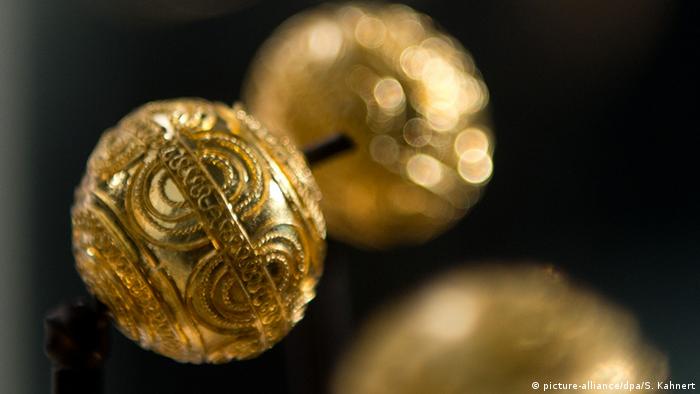A Bronze Age skeleton found buried in West Sussex with one of the earliest bronze daggers in the UK was probably a high-ranking warrior chief who died in combat, experts have said.
James Kenny, site excavator and planning archaeologist at Chichester District Council, views the skeleton known as Racton Man at the Novium Museum in Chichester, West Sussex [Credit: Chichester District Council]
The virtually-complete skeleton dating back more than 4,000 years was found on farmland in the hamlet of Racton, near Chichester, in 1989.
Its background has long been a source of intrigue to historians as the skeleton - nicknamed Racton Man - was found with an extremely rare and valuable dagger.






